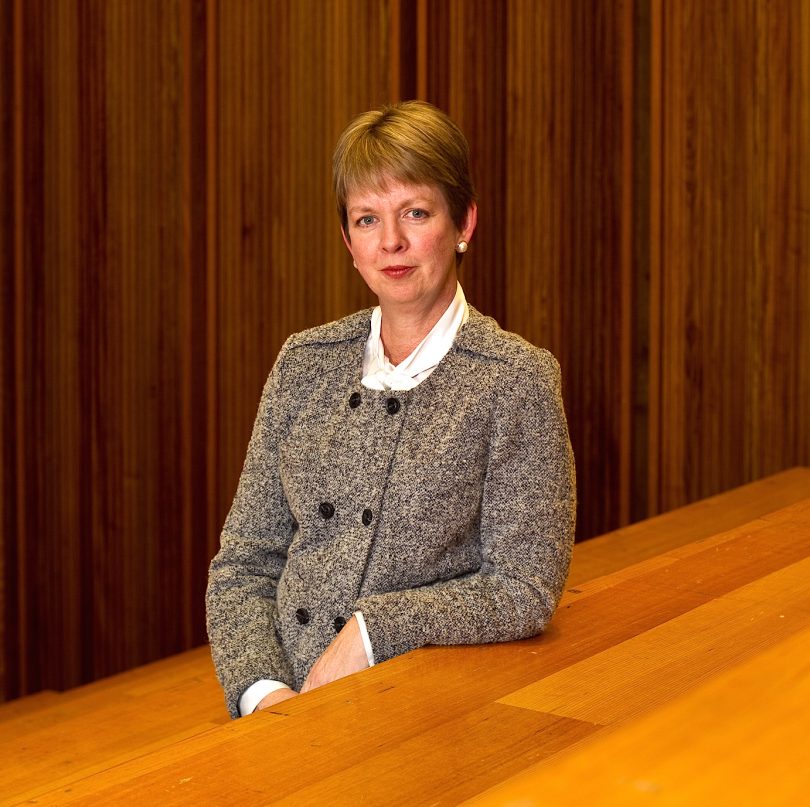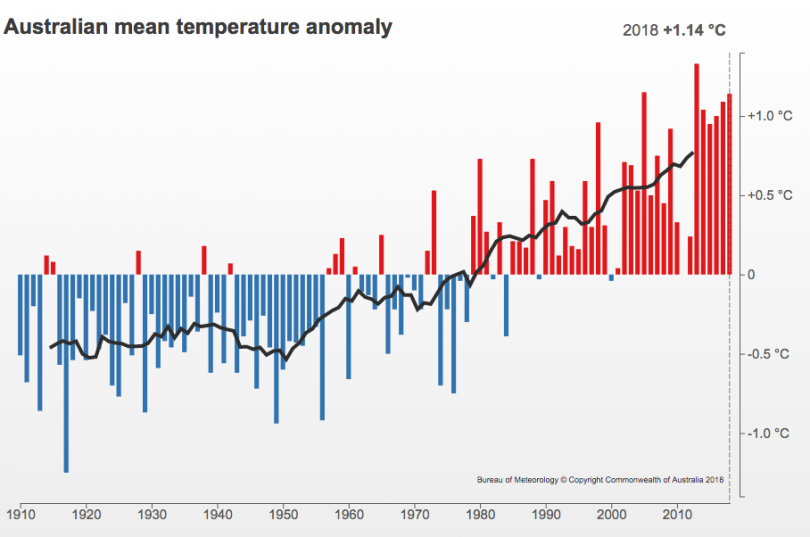
The North Black Range fire flares up west of Braidwood on Sunday, 1 December. Photo: Michael Weaver, Region Media.
As Canberra heads into what could be its hottest days on record, a senior climatologist at the Australian National University says she is “deeply concerned” that heatwaves such as the one sweeping Australia this week will become the new norm.
Professor Janette Lindesay from the ANU College of Science has spent her career studying the long-term effects of the climate and said while the current conditions are not the driest on record, the current bushfire threat and heatwaves such as this are a very strong indication of things to come.
“I am deeply concerned about seeing a heatwave like this,” Professor Lindesay told Region Media.
“None of this is unexpected to me. This is what we’ve seen coming for the last decade. It’s happening and it’s obvious that the globe is warming. It’s deeply worrying about what it means for now and the future.”
Professor Lindesay said a heat event like the current one sweeping across Australia is completely natural during the summer months.
“But what we’re seeing and what is unusual is that the temperatures these air masses are reaching are getting higher, and that is because of the underlying trend of global heating.”

Professor Janette Lindesay: “We’re now in uncharted territory where we are seeing temperatures that we’ve not ever had in our records.” Photo: Belinda Pratten
Professor Lindesay said that average temperatures have been rising for “about the last 15 years” and while there have been variations around the average, the average has been getting higher, which also means the fluctuations in temperatures have also been rising.
“So we’re now in uncharted territory where we are seeing temperatures that we’ve not ever had in our records.
“And this is only December and we’re not even into the middle of summer yet. It’s not unheard of to have high temperatures in December of course, but it is definitely unusual to have the temperatures so high so early.”

Australia’s mean temperature anomalies, with the black line showing the moving average. Image: Bureau of Meteorology
Professor Lindesay has analysed Bureau of Meteorology rainfall and temperature records available for the Canberra/Queanbeyan area, which begins in late 1870.
She said in the 148 years of rainfall records, there have been five severe droughts prior to the current one. The most severe (and shortest) occurred between 1979-83. The longest was the Millennium drought from 1996-2008, while the most persistently dry and third-longest was the Federation drought from 1894-1902.
Professor Lindesay said 2019 will be among the warmest years on record for Canberra/Queanbeyan. To the end of 2018, the 10 warmest years on record for NSW and the ACT have occurred since 2005, with six of them since 2013 (2018 was the warmest, while 2017 and 2013 equal second-warmest).
During the 2018-19 bushfire season, there were five total fire bans issued by the ACT Emergency Services Agency (ESA). On Wednesday (18 December), the ESA issued its sixth total fire ban of the 2019-20 season. It will run for three consecutive days from midnight Wednesday to midnight Saturday (21 December). The first three total fire bans of this season were during November.
The Bureau of Meteorology’s Australian Seasonal Bushfire Outlook: December 2019 says: “The ACT has received less than average rainfall for nearly three years, leading to a persistent and high level of drought. The lowland forests have been very dry for some time, while highland forests are now dry as well. This indicates that fuel flammability in the forests is high and could remain so. The forest fire risk is elevated. The overall bushfire risk for the ACT is above normal.”
Preliminary results suggest that the 17th December was Australia's hottest day on record at 40.9 ºC, with the average maximum across the country as a whole, exceeding the previous record of 40.3 ºC on the 7th January 2013. https://t.co/TKwWBuFPgJ pic.twitter.com/xOFpokoXos
— Bureau of Meteorology, Australia (@BOM_au) December 18, 2019
The BOM also said Australia recorded its hottest average maximum temperature across the country of 40.9 degrees celsius on 17 December this week. The previous record of 40.3 was on 7 January, 2013.
The question for climatologist Professor Lindesay is whether the current conditions will continue to get hotter, or whether the current warming trend will begin to subside.
She says all the indications are that temperatures will continue to rise, as will the danger from bushfires.
Professor Lindesay said the landscape hasn’t recovered from the Millennium drought, which officially ended more than 10 years ago. She said the soil has been drying out since at least mid-2017.
“Low rainfall, increasingly high temperatures and high evaporation combined with water [and land] management, plus the resource needs of the growing population, have led to the current situation,” Professor Lindesay said.
“This drought and high temperatures are happening without an El Nino event, making the drought even more noteworthy, since previous severe drought and bushfire seasons were often linked to El Nino events.
“Global heating has increased the likelihood of reduced rainfall and higher temperatures in south-east Australia, regardless of other factors.
“The outlook through to April is for a slightly improved chance of getting some rain, but there are also strong indications of higher than normal temperatures through summer and into autumn, maintaining the bushfire threat and prolonging the bushfire season, and making heatwaves very likely.”
Professor Lindesay said people should no longer be debating whether climate change is real, and should move on to strategies to combat further global warming.
“We’re in a situation where we’ve gone too far to not feel the effects of the damage that we’ve done, but it’s not too late to take effective action to stop it from getting much worse in the future,” Professor Lindesay says.
“And we’re seeing the complete absence of leadership and commitment from the people who are supposedly leading us.”













